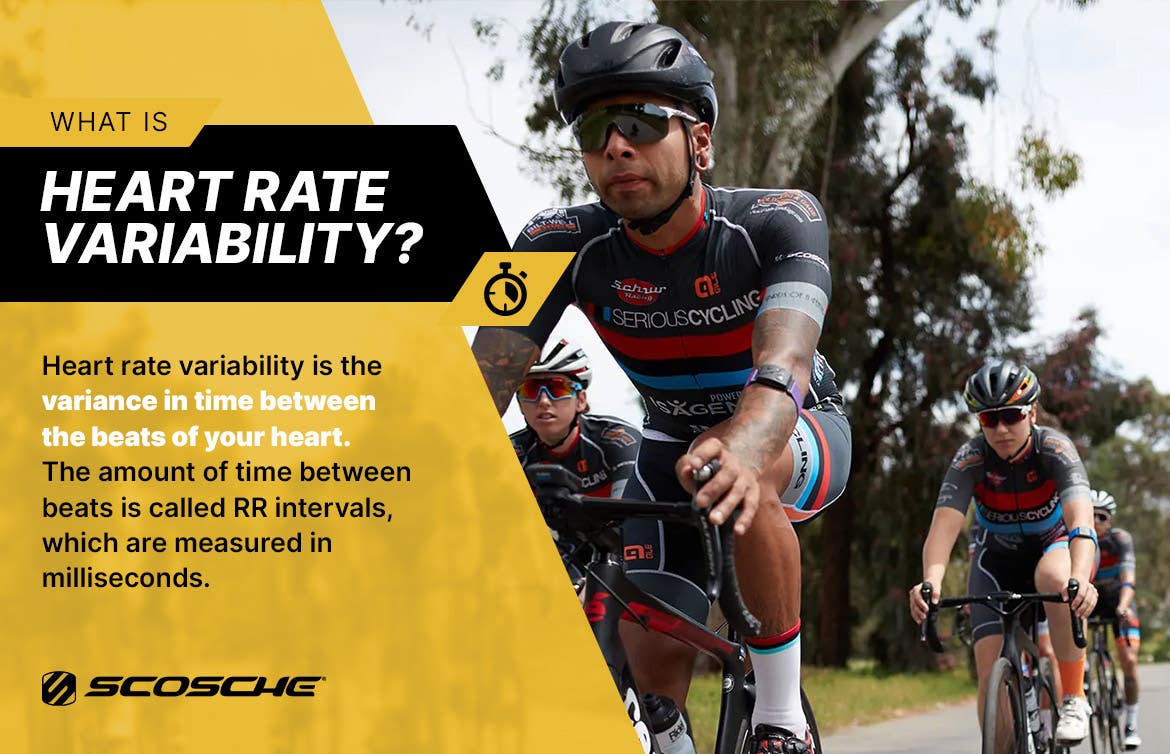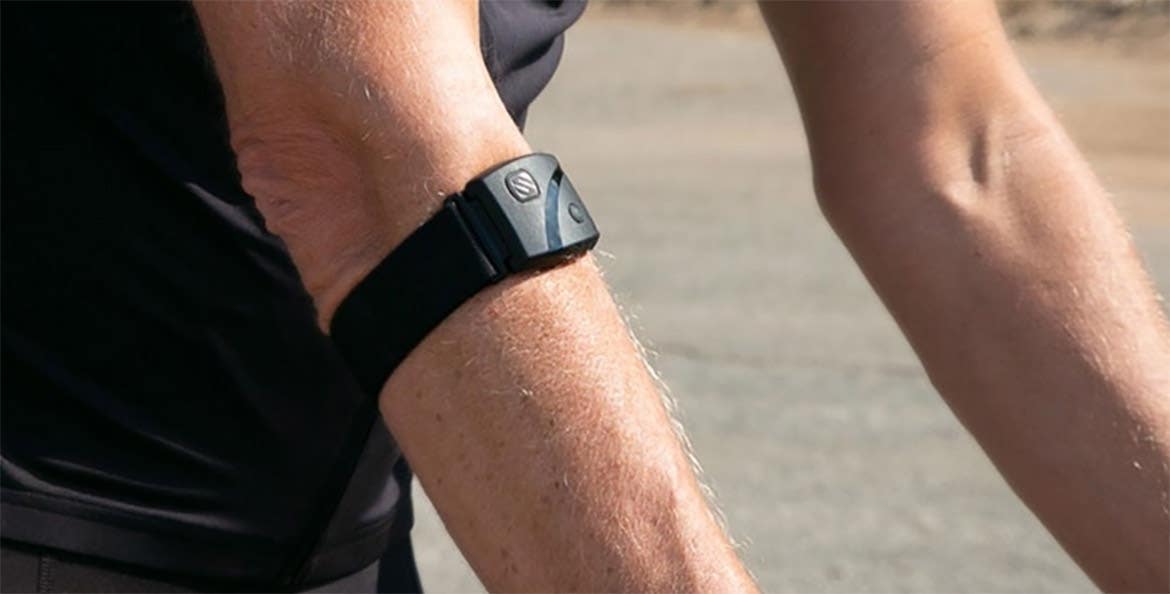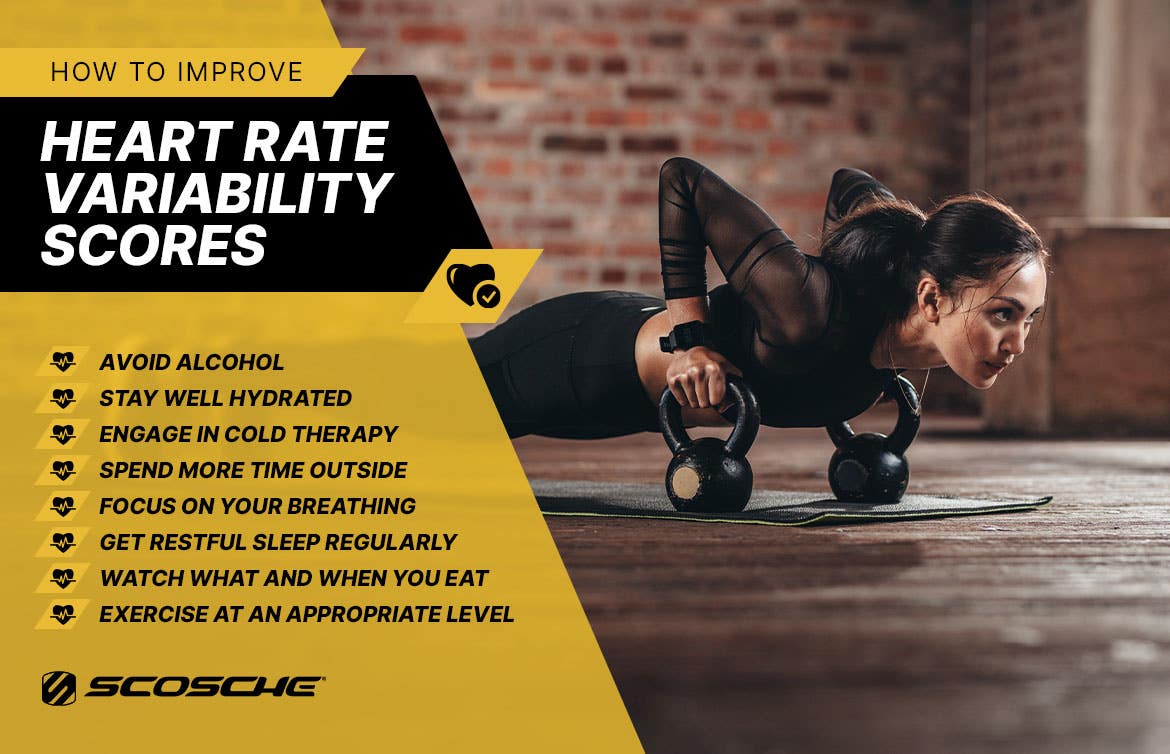What Is a Good Heart Rate Variability?

Heart rate variability has become an increasingly popular topic over the last several years, particularly among those who are interested in measuring their heart rate and overall health.
Part of the reason for the buzz around the term is that many consumer wearable devices like top-tier wearable heart rate monitors list heart rate variability (often displayed as “HRV”) as one of the metrics measured.
Since heart rate variability can be an indicator of a person’s well-being, today, we will explore this metric from a practical perspective and answer questions such as:
- What is heart rate variability?
- How is HRV measured?
- What is a good heart rate variability?
- Why should I track HRV?
- How can I improve heart rate variability?
- And more
With that said, let’s get started.


What Is Heart Rate Variability?
Heart rate variability is the variance in time between the beats of your heart. While measuring your heart rate will tell you how fast or slow your heart is beating (measured in beats-per-minute), heart rate variability will tell you how much difference there is in the time between each beat.
The amount of time between beats is called RR intervals, which are measured in milliseconds.
The Mechanics Behind Heart Rate Variability
While a person’s heart beats at a specific rate, it is subject to change based on circumstances. For instance, if a person is resting, their heart rate is likely to be slower. However, if they are stressed or engaged in physical activity, it will be higher. Additionally, certain medications can alter one’s heart rate in one direction or the other.
So, there is variability in people’s heart rates based on the needs of the body. That said, by itself, the heart does not know when to make these changes. Therefore, it relies on another bodily system for information. This means that heart rate variability examines the changes in time between heart beats as well as the balance between the sympathetic and parasympathetic nervous system (which, when taken in tandem, for the autonomic nervous system).


In general, these two parts of the autonomic nervous system work as follows:
- Sympathetic nervous system: Manages the “fight-or-flight” response and increases blood pressure, heart rate, rate of respiration and more to prepare different muscle groups to act in emergency situations.
- Parasympathetic nervous system: The counterbalance to the sympathetic nervous system, the parasympathetic system controls the body’s natural relaxation response (particularly after a fight-or-flight reaction). Thus, this system controls the reduction of blood pressure and heart rate, among other tasks.
These two systems work together to balance out one another. For instance, if you believe that you are suddenly in danger, your sympathetic nervous system will kick into action, increasing heart rate and blood pressure, speeding up breathing and the like as your body is preparing for your muscles to require more blood and oxygen than normal.
However, if that thing that initially frightened you turns out to be nothing, your parasympathetic nervous system will take control and tell your heart to slow down and decrease blood pressure, while also telling other bodily systems to go back into relaxation mode.
How Is Heart Rate Variability Measured?
When it comes to measuring heart rate variability, these fluctuations are extremely small, which means that it requires equipment to capture such information.
In a medical setting, professionals use electrocardiogram (EKG) machines to detect and measure heart rate variability. Alternatively, a doctor might send a patient home wearing a monitor that can track this information over an extended period of time.
However, given the exponentially improving nature of technology, there are now a multitude of affordable non-medical consumer devices that can track heart rate variability. For instance, many runners, swimmers and other types of athletes will purchase a waterproof heart rate monitor capable of measuring heart rate variability to wear during their exercise routine. Such devices are typically worn around the chest, wrist or forearm. That said, there are others that attach to the finger and tend to be more sensitive. However, most of these are not designed to be worn while engaged in physical activity, are quite expensive or both.
Why Is Tracking Heart Rate Variability Important?
Before answering questions like “What is a good heart rate variability?” – it is necessary to understand why measuring this metric is important in the first place.
The fact is that tracking heart rate variability can be extremely useful for detecting irregularities or imbalances in the autonomic nervous system. As discussed earlier, there is a synergy between the sympathetic and parasympathetic nervous system. One must properly work with the other for the autonomic nervous system to operate correctly.
However, if there is an imbalance between these parts of the autonomic nervous system, it can have a significant impact on health and well-being later in life.
For instance, a person whose parasympathetic nervous system is activated more often is going to be more relaxed than their counterpart and is likely to have a higher heart rate variability. These types of folks are generally regarded as being more resilient to stress and potentially physically fit as higher heart rate variability scores are correlated with better health.
On the other hand, if a person’s sympathetic nervous system is more active, this will be expressed (in part) by a low HRV. The fact is that the sympathetic nervous system is something that focuses on short-term survival and if its response becomes a chronic issue for a person, their health can suffer dramatically.
That said, there are ways to improve heart rate variability, which we will cover shortly.


What Is a Good Heart Rate Variability?
The truth is that there is no one ideal heart rate variability score, as “good” will be relative to each person. However, there are some general guidelines by which people can abide.
For instance, generally speaking, those with a heart rate variability below 50 milliseconds (ms) are considered to be unhealthy. Likewise, those with an HRV score between 50 and 100 milliseconds are seen as having compromised health. However, those with an HRV of 100 milliseconds and above are considered to be healthy.
That said, low heart rate variability scores are not always indicative of poor health. For healthy individuals, a low HRV score can be produced by a night of restless sleep or even a tough workout. Therefore, if you test yourself and receive a low score, it is best to try again within a few days.
However, chronically low heart rate variability scores can be an indicator of potential illness, declining health, chronic stress or even overtraining. Those who have persistently low HRV scores are at risk for a variety of issues such as depression, diabetes, cardiovascular disease and worse.
It is also important to consider a person’s age when measuring heart rate variability, as this metric tends to drop considerably as people age. For instance, those between 20 and 25 years old tend to have an HRV of 55 to 105. However, those who are 60 to 65, generally have an HRV of 25 to 45. This is part of why answering “What is a good heart rate variability?” is very relative, subjective and complicated.
Typically, a heart rate variability outside of the ideal range (given a person’s circumstances) does not constitute an emergency nor is it even cause for immediate concern. However, it can be an indicator of underlying health problems or future issues. If you find that your HRV score is chronically low for your age and level of fitness, it is best to see a doctor for an EKG scan as these devices are far more sensitive and accurate than consumer electronics.
Additionally, while a low heart rate variability reading can be a potential sign of illness, there are things that you can do to improve your HRV.


How to Improve Heart Rate Variability Scores
When it comes to bettering HRV scores, the best thing you can do is to focus on habits that will improve your health overall. Some of those practices include:
Exercise at an Appropriate Level
Numerous studies on heart rate variability have shown that exercise is one of the best ways to elevate this score. That said, it is important to avoid overtraining, as strenuous activities can temporarily reduce heart rate variability. Therefore, it is necessary to give your body the necessary time it needs to recover.
To help avoid overtraining, it is wise to wear a health armband during exercise that can display information on your target heart rate.
Watch What and When You Eat
Of course, eating a heart healthy diet is going to be something that will benefit your HRV scores. However, the time at which you eat can have an impact as well.
The fact is that our bodies perform better when they operate on regular eating schedules. Moreover, not eating for at least three hours prior to bedtime enables your body to get more restful, restorative sleep.
Stay Well Hydrated
How well hydrated you are determines your blood volume. Therefore, the more liquids you have in your system, the more easily blood can circulate throughout the body and deliver vital nutrients.


When it comes to how much water you should drink per day, the average is 11.5 cups for women and 15.5 cups for men, though this will vary based on a variety of factors such as activity level, temperatures, overall health and more.
Avoid Alcohol
While many have heard that, in moderation, alcohol can be beneficial for heart function, this is not true for everyone.
The fact is that, in the long-term, above-average alcohol consumption can lead to weakened heart muscles and an irregular heartbeat.
If you are already having issues with your HRV scores, it is advisable to avoid alcohol completely.
Get Restful Sleep Regularly
Getting a full eight hours of quality sleep is essential for optimal health. However, it isn’t only the amount and quality of sleep that you receive, as your sleeping schedule has a dramatic impact as well.
The fact is that going to sleep and waking up at the same time each day can help to improve your HRV scores by helping to sustain your circadian rhythm.
Spend More Time Outside
Going outside to get some sunlight is vital for your overall well-being, as doing so increases levels of vitamin D, alertness and overall mood. However, getting out into the sun and even watching it set also trigger biological processes involved with regulating your sleep cycles, hormone production and energy levels.
Therefore, if you are looking for tactics to get that more regular, restful sleep, getting outside more often is an excellent strategy.
Engage in Cold Therapy
Exposing the body to cold temperatures for a limited amount of time has shown to stimulate the vagus nerve, which is the main component of the parasympathetic nervous system.
Some ways that you can do this at home include taking cold showers, ice baths or even jumping into a cold pool. Alternatively, if you find yourself so inclined, you could even seek out a cryotherapy spa in your area.
Focus on Your Breathing
Finally, there are a multitude of controlled breathing techniques that can help improve HRV scores. At the same time, these breathing exercises will also help to stave off stress.


Understanding Heart Rate Variability
With all of this information covered, you should now have a solid understanding of heart rate variability, how it is measured, why it is important and what a good heart rate variability score is and how to improve your HRV.
From here, the only thing left for you to do is to measure your HRV and implement the improvement tips listed above, no matter how ideal your numbers appear.
If you are in the market for a heart rate monitor that can measure heart rate variability, check out Scosche’s line of first-rate monitors and accessories.
Image Credits
Mix Tape/Shutterstock.com
Iakov Kalinin/Shutterstock.com
Jacob Lund/Shutterstock.com
justone/Shutterstock.com
Qilin's prance Filmmaker/Shutterstock.com